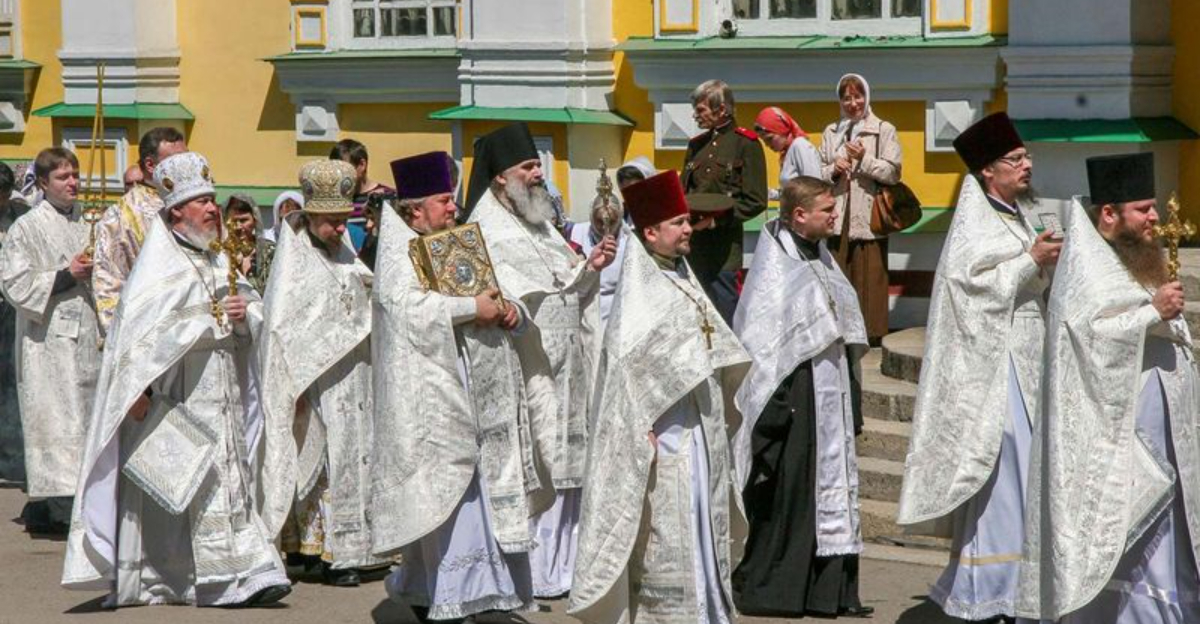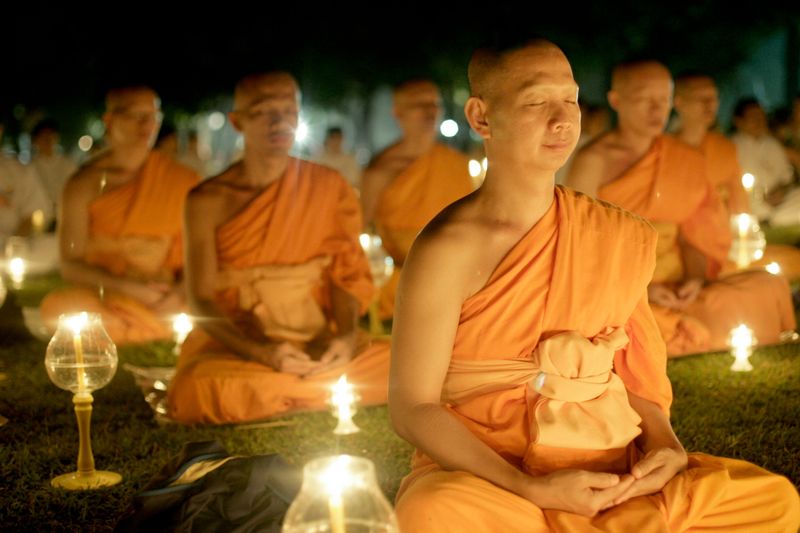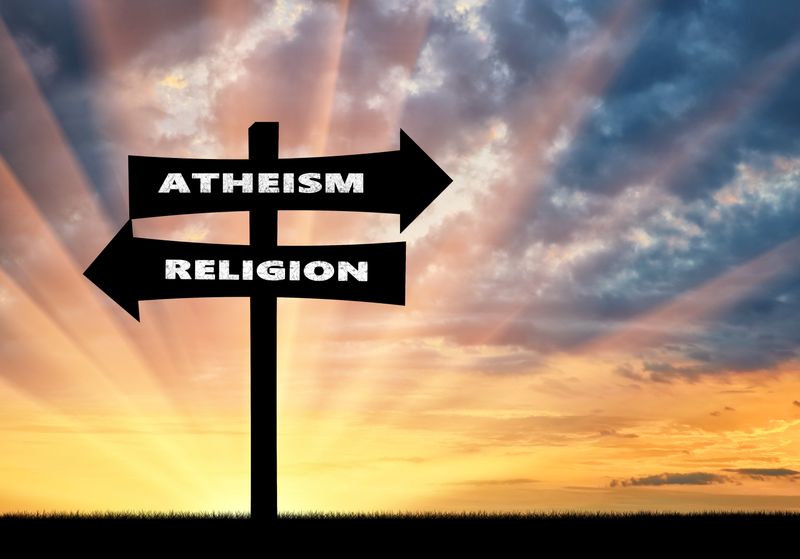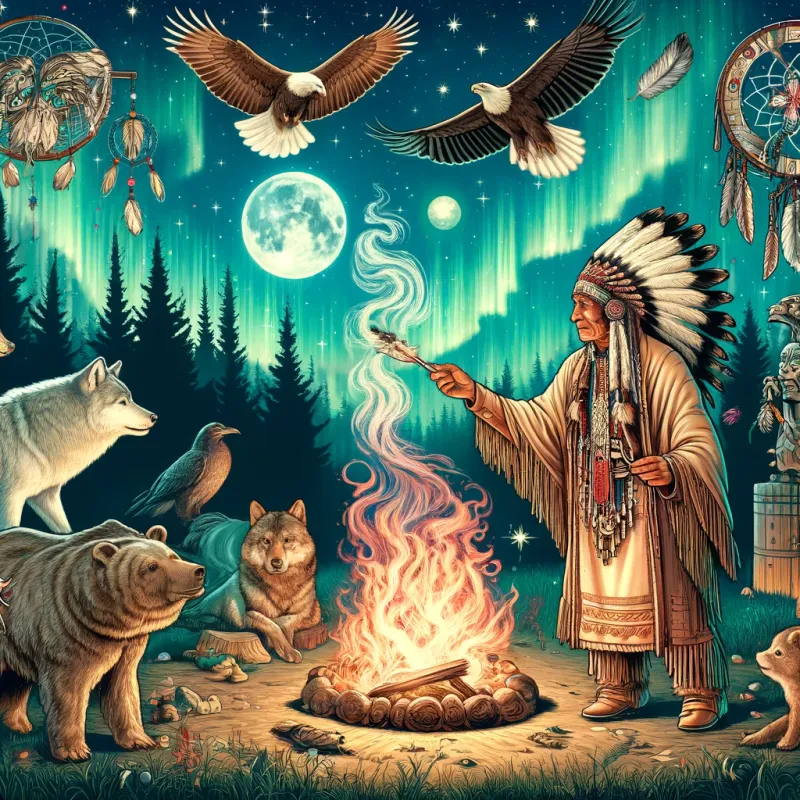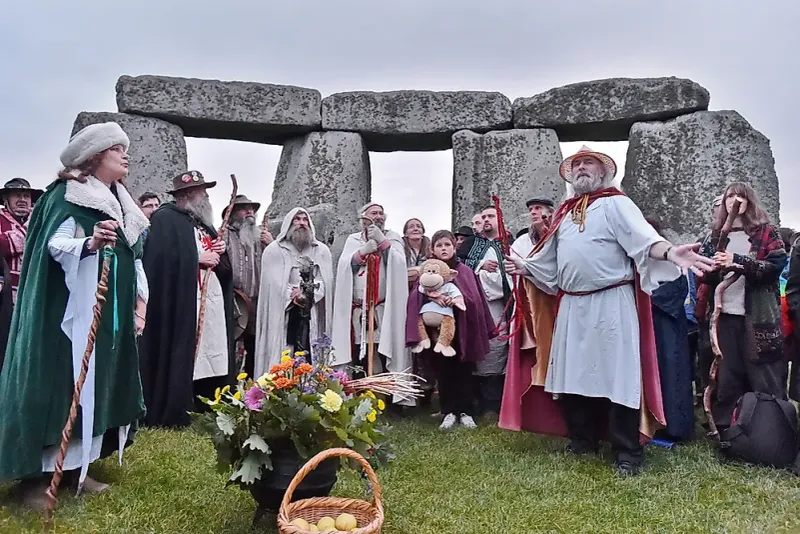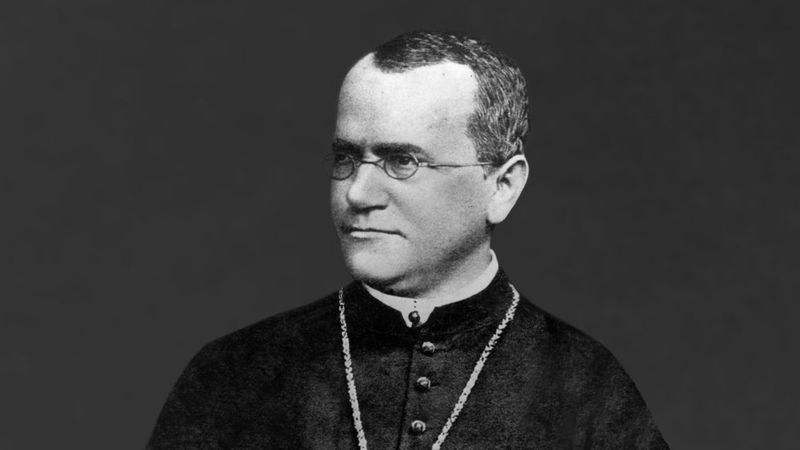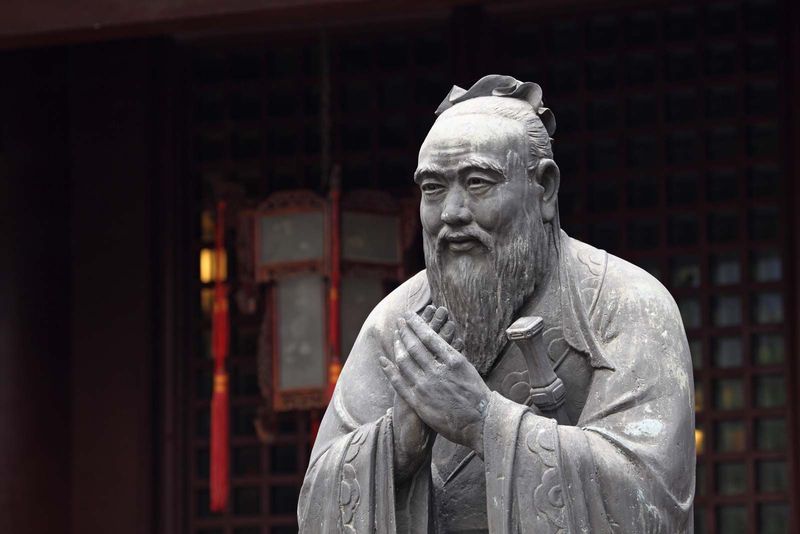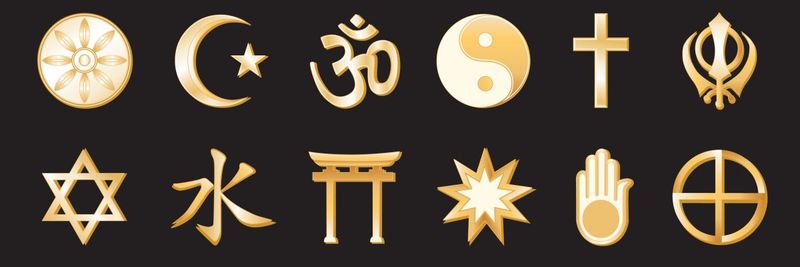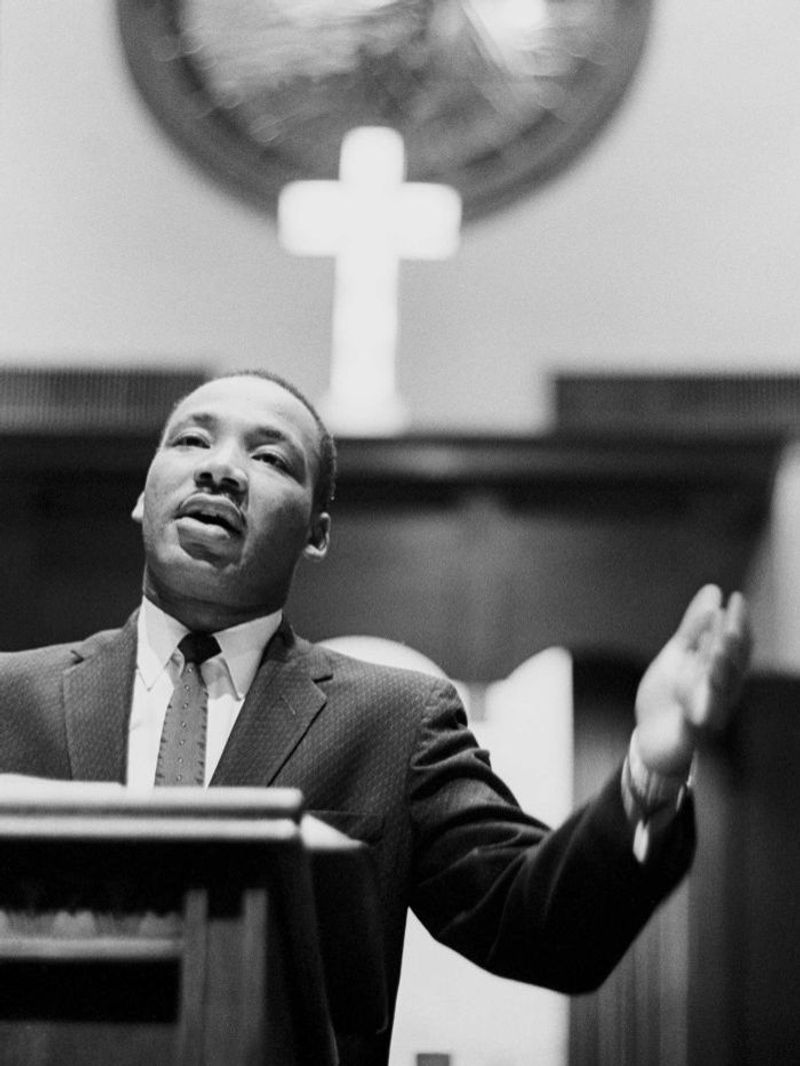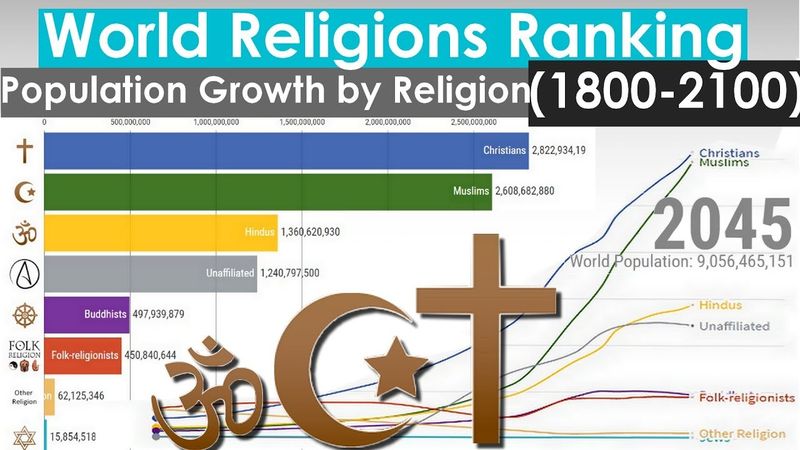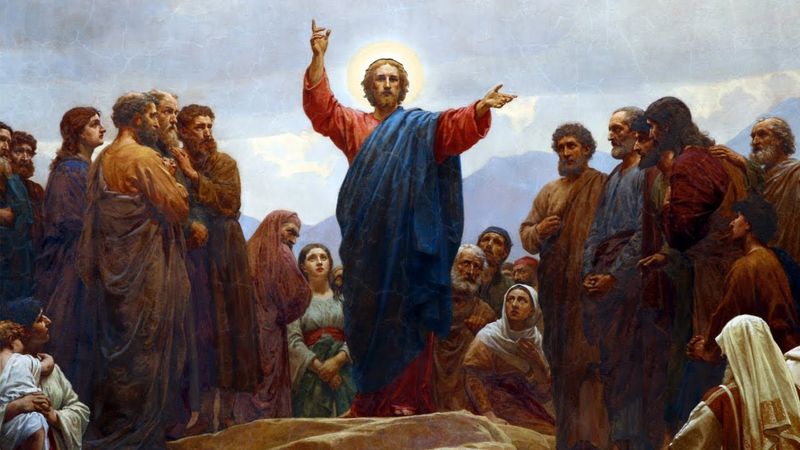Religion shapes cultures, traditions, and personal identities worldwide, yet misunderstandings about different faiths remain surprisingly common.
These misconceptions often lead to prejudice, discrimination, and unnecessary division between communities.
By clearing up these widespread myths, we can build better understanding and respect across different belief systems.
1. All Muslims Are Arabs
The majority of Muslims actually live outside the Arab world. Indonesia, not an Arab country, has the largest Muslim population globally, with over 230 million followers. Pakistan, India, and Bangladesh together account for more Muslims than all Arab nations combined.
Arabs make up only about 20% of the world’s Muslim population. Islam crosses ethnic boundaries, encompassing diverse cultures from West African to Chinese to European communities.
This misconception often stems from media portrayals that focus primarily on Middle Eastern Muslims, creating a skewed perception of what a typical Muslim looks like or where they might come from.
2. Hindus Worship Many Gods Without Unity
Hinduism appears polytheistic on the surface but actually embraces a complex understanding of divinity. Many Hindus believe in one supreme reality (Brahman) that manifests in different forms and aspects called deities.
These various gods and goddesses represent different qualities or functions of the single divine reality. Think of it as viewing the same diamond through different facets – each angle shows something unique but belongs to the same gem.
This concept called henotheism allows Hindus to worship specific deities while recognizing them as expressions of the ultimate reality. The misconception misses this sophisticated theological framework that unifies the seemingly separate divine figures.
3. Buddhism Teaches That Life Is All Suffering
Many newcomers to Buddhism mistakenly believe it teaches that life is nothing but misery. What Buddha actually taught was dukkha – often translated as ‘suffering’ but better understood as ‘unsatisfactoriness’ or ‘stress’ that comes from attachment.
Buddhism acknowledges joy, happiness, and pleasure as real experiences. The Four Noble Truths don’t stop at identifying suffering but offer a practical path to overcome it through the Eightfold Path.
Far from being pessimistic, Buddhism provides tools for finding genuine happiness by understanding the nature of our minds. The goal isn’t to eliminate all feelings but to develop a balanced relationship with both pleasant and unpleasant experiences.
4. Jews Don’t Believe in an Afterlife
Contrary to popular belief, Judaism does include various concepts of afterlife. While focusing primarily on this-worldly concerns, traditional Jewish texts discuss Olam Ha-Ba (the World to Come) and concepts like Gan Eden (paradise) and Gehinnom (a place of purification).
Unlike some faiths with detailed afterlife descriptions, Judaism leaves much open to interpretation. Different Jewish movements—Orthodox, Conservative, Reform, and Reconstructionist—have varying perspectives on what happens after death.
The emphasis on living ethically in the present rather than focusing on rewards after death might contribute to this misconception. Judaism’s primary concern is how we live our lives now, though concepts of continuation beyond death certainly exist within the tradition.
5. Christianity Has Always Been One Unified Church
Christianity has experienced numerous significant divisions throughout its history. The first major split occurred in 1054 CE between Eastern Orthodox and Roman Catholic churches, followed by the Protestant Reformation in the 16th century that fractured Western Christianity into countless denominations.
Even before these formal splits, early Christians held diverse theological views. Today’s landscape includes thousands of denominations with different practices, interpretations, and organizational structures.
These divisions reflect genuine theological differences, cultural contexts, and historical circumstances rather than simple stubbornness. Understanding this diversity helps explain why Christians can hold dramatically different positions on social issues while claiming the same religious identity.
6. Atheism Is Just Another Religion
Atheism simply means not believing in gods – it lacks the structured beliefs, practices, and institutions that define religions. While some atheists gather in communities like secular humanist groups, many don’t participate in any organized activities related to their non-belief.
Unlike religions, atheism has no sacred texts, required rituals, or unified moral code. Individual atheists reach their position through different paths and may hold widely varying philosophical and ethical views.
The misconception often arises from seeing passionate atheist advocates and assuming they represent all non-believers. Most atheists don’t evangelize their position or organize their lives around their lack of religious belief, making the comparison to religion inaccurate.
7. Sikhs Are Muslims or Hindus
Sikhism emerged as a distinct religion in 15th-century Punjab, founded by Guru Nanak. Though it developed in a region where Hinduism and Islam were prevalent, Sikhism has its own unique theology, scripture (Guru Granth Sahib), and practices.
Male Sikhs are recognizable by their turbans and uncut hair, which sometimes leads to confusion with Muslim dress. However, these practices stem from distinctly Sikh religious requirements, not Islamic ones.
Sikhs believe in one creator God, equality of all humans regardless of gender or caste, and the importance of service to others. The misconception reflects a broader pattern of overlooking South Asian religious diversity and lumping distinct traditions together based on superficial similarities.
8. Native Spiritualities Are Just “Myths”
Indigenous spiritual traditions worldwide are often dismissed as primitive myths rather than recognized as complex religious systems. These traditions typically include sophisticated cosmologies, ethical frameworks, and spiritual practices developed over thousands of years.
Native spiritualities remain living traditions practiced by millions today, adapting to contemporary circumstances while maintaining core principles. They often emphasize relationships between humans, nature, and the spiritual world in ways that offer valuable perspectives on environmental ethics.
Labeling these beliefs as mere “myths” reflects colonial attitudes that privileged written religious texts over oral traditions. This dismissive view has historically justified suppression of indigenous practices and fails to recognize their ongoing spiritual significance to Native communities.
9. Pagans Are Devil Worshippers
Modern paganism encompasses diverse nature-based spiritual practices that typically have nothing to do with Satan or devil worship. Most pagans don’t even believe in the devil, which is primarily a Christian concept.
Contemporary pagan traditions like Wicca, Druidry, and various polytheistic paths focus on honoring nature, seasonal cycles, and sometimes pre-Christian deities. Their ethical systems often emphasize personal responsibility and ecological awareness rather than opposition to Christianity.
This misconception stems from medieval Christian efforts to demonize non-Christian religions and was reinforced during the witch hunts of the 16th and 17th centuries. Modern pagans generally seek to live peacefully alongside other faiths while reviving and reimagining ancient spiritual connections to the natural world.
10. All Religious People Reject Science
Many religious individuals fully embrace scientific discoveries while maintaining their faith. Numerous scientists throughout history were deeply religious, including Gregor Mendel (a monk who pioneered genetics) and Georges Lemaître (a priest who first proposed the Big Bang theory).
Most mainstream religious institutions accept scientific consensus on evolution, climate change, and other key issues. The Dalai Lama has stated that if science disproves Buddhist teachings, Buddhism should change, not science.
While certain religious groups do reject specific scientific findings that contradict their literal interpretations of sacred texts, they represent only a portion of religious believers. The relationship between science and religion is complex and varies widely across different faiths and denominations.
11. Confucianism Is a Religion
Confucianism functions more as a philosophical and ethical system than a religion in the Western sense. Founded on the teachings of Confucius in ancient China, it focuses on proper social relationships, virtuous conduct, and effective governance rather than theology or supernatural beliefs.
Unlike many religions, traditional Confucianism lacks a priesthood, houses of worship, or doctrines about gods or afterlife. Its core texts like the Analects address practical ethics for family life, education, and politics.
However, the boundary between philosophy and religion isn’t always clear-cut in East Asian traditions. Over centuries, Confucian practices like ancestor veneration took on spiritual dimensions, and Confucian principles often blended with Buddhist and Daoist religious elements in Chinese culture.
12. All Religions Are Basically the Same
While religions share some common elements like ethical codes and community practices, they differ fundamentally in their core beliefs and worldviews. Buddhism doesn’t center on a creator deity, while monotheistic faiths like Islam emphasize the oneness of God as their foundation.
Religions also vary dramatically in their views on human nature, salvation or enlightenment, and what happens after death. These differences aren’t superficial but reflect distinct understandings of reality and human purpose.
Recognizing these significant differences doesn’t mean we can’t find common ground for dialogue and cooperation. However, claiming all religions are essentially identical oversimplifies rich traditions and can unintentionally disrespect the unique elements believers consider most meaningful about their faith.
13. Religious People Are Always Peaceful or Always Violent
Both extremes—portraying religious believers as inherently peaceful or inherently violent—misrepresent the complex reality. All major religious traditions contain teachings that promote peace, compassion, and nonviolence alongside texts that have been used to justify conflict in certain contexts.
Individual believers interpret their traditions differently, leading to wide-ranging behaviors within the same faith. Religious motivations rarely act alone but interact with political, economic, and social factors in driving both peaceful and violent actions.
Historical examples show religious figures leading both nonviolent movements (like Martin Luther King Jr.) and violent campaigns. This complexity makes broad generalizations about religion’s relationship to peace or violence misleading and unhelpful for understanding real-world situations.
14. Religion Is Dying Out Everywhere
While religious participation has declined in Western Europe and North America, global trends tell a different story. Christianity and Islam continue growing rapidly in Africa, and Pentecostal Christianity is expanding throughout Latin America and Asia.
By 2050, the percentage of religiously affiliated people worldwide is projected to increase, not decrease. Even in secularizing societies, many people maintain spiritual beliefs and practices outside traditional religious institutions.
The misconception stems from generalizing Western European secularization patterns to the entire world. Religious expression is evolving rather than disappearing, with many people creating personalized spiritual practices or joining new religious movements while traditional faiths adapt to changing social contexts.
15. Faith and Doubt Can’t Coexist
Many religious traditions actually value questioning and doubt as part of a healthy spiritual journey. Jewish tradition celebrates wrestling with difficult questions, as reflected in the name “Israel” which means “one who struggles with God.” Christian theologians like Paul Tillich spoke of “doubt as an element of faith.”
Religious history includes numerous figures who experienced profound doubt while maintaining their faith. Mother Teresa’s private writings revealed decades of spiritual darkness even as she continued her religious work.
Rather than seeing doubt as faith’s opposite, many religious communities recognize it as a natural part of spiritual growth. This perspective allows believers to honestly engage with difficult questions without feeling they must abandon their religious identity when certainty proves elusive.
16. Religion Is the Main Cause of Most Wars
Historical analysis reveals that purely religious conflicts are relatively rare. Political power, territorial disputes, economic resources, and ethnic tensions typically play more significant roles in causing wars, even when religious language is invoked.
Major conflicts often labeled “religious wars,” like the Crusades or the Thirty Years’ War, involved complex political and economic motivations beyond religious differences. The deadliest conflicts of the 20th century—World War I, World War II, and various civil wars—stemmed primarily from secular ideologies and nationalism.
This doesn’t mean religion never contributes to conflict, but the simplistic view that religion causes most wars doesn’t match historical evidence. Religious institutions have also played important roles in peace-building, conflict resolution, and promoting reconciliation throughout history.
17. All Buddhists Are Vegetarians
Buddhist dietary practices vary widely across different traditions and countries. While some schools, particularly in East Asia, strongly emphasize vegetarianism based on the principle of non-harm, many Buddhists worldwide do eat meat.
Theravada Buddhists in Thailand or Sri Lanka often accept meat if the animal wasn’t killed specifically for them. Tibetan Buddhists traditionally ate meat due to the limited vegetation in their mountainous homeland where few plant foods could grow.
Even the Buddha himself reportedly accepted meat offerings, teaching a “middle way” approach rather than strict rules. This diversity reflects Buddhism’s adaptability to different cultural and environmental contexts while maintaining core ethical principles that practitioners apply according to their circumstances.
18. The Bible Is a Single, Unchanged Book
The Bible developed over roughly a thousand years through multiple authors, editors, and compilers. Different Christian denominations include different books in their Bibles – Catholic and Orthodox Bibles contain books not found in Protestant versions.
Translation processes inevitably involve interpretive decisions, as ancient Hebrew and Greek concepts don’t always have direct English equivalents. Early biblical manuscripts show variations, requiring scholars to compare different versions to determine likely original readings.
Far from diminishing its significance, understanding the Bible’s complex development helps readers appreciate the rich traditions behind it. Many religious scholars see this textual history as showing how communities of faith engaged with sacred writings across changing times and contexts.
19. Muslims Can’t Be American (or Western)
Muslims have been part of American society since before the nation’s founding. Estimates suggest 10-15% of enslaved Africans brought to America were Muslim, and Muslim immigrants have been arriving since the late 19th century.
Today, approximately 3.5 million Muslims live in the United States, integrated across all sectors of society as doctors, teachers, engineers, athletes, and elected officials. American Muslims represent diverse ethnicities including African American, Arab, South Asian, European, and Latino communities.
Similar patterns exist across Western Europe, where Muslims have established communities for generations. The misconception frames Islam as inherently foreign to Western societies, overlooking centuries of Muslim presence and contribution to Western cultures.
20. Hinduism Is All About Caste
While the caste system has been associated with Hindu society, many Hindu reformers and spiritual leaders have actively opposed caste discrimination. Figures like Mahatma Gandhi and B.R. Ambedkar worked against caste prejudice, and many modern Hindu movements reject caste distinctions entirely.
Hinduism encompasses diverse philosophies, devotional practices, and spiritual paths that extend far beyond social stratification. Core Hindu concepts like dharma (duty/ethics), karma (action/consequence), and moksha (spiritual liberation) address universal human concerns.
The historical development of caste involved complex social, economic, and political factors beyond religious teachings. Many contemporary Hindus, especially in diaspora communities, practice their faith without any emphasis on caste identity.
21. Scientology Is the Only New Religious Movement
The religious landscape includes thousands of new religious movements beyond Scientology. Groups like Bahá’í Faith (founded 1844), Falun Gong (1992), and various Neo-Pagan traditions represent significant new religious developments with millions of adherents worldwide.
New religious movements emerge continuously in response to changing social conditions. Some draw from established traditions while adding new elements, like many African Independent Churches that blend Christianity with indigenous practices.
Focusing exclusively on controversial groups like Scientology creates a distorted picture of religious innovation. Many new movements address contemporary spiritual needs by combining traditional wisdom with modern insights, showing how religious expression continues evolving rather than remaining static.
22. Jews Rejected Jesus as a Prophet
The common narrative that “the Jews rejected Jesus” oversimplifies a complex historical situation. In Jesus’ time, Jewish society included diverse groups with different theological perspectives, and his earliest followers were Jewish.
Many factors influenced responses to Jesus, including Roman political tensions and varying messianic expectations. The Gospels reflect later Christian-Jewish conflicts rather than universal Jewish rejection during Jesus’ lifetime.
Jewish perspectives on Jesus have varied throughout history. While mainstream Judaism doesn’t accept Jesus as divine or messiah, some Jewish thinkers have recognized him as a teacher within Jewish tradition. Messianic Judaism and Jewish-Christian dialogue offer additional perspectives, showing the relationship between Judaism and Jesus remains nuanced rather than simply one of rejection.
23. Religious Dress = Oppression
Religious clothing choices reflect diverse motivations beyond external pressure. Many women who wear hijabs, niqabs, or modest dress do so from personal conviction about modesty, identity, or spiritual practice rather than coercion.
Religious dress can represent resistance to certain cultural pressures. For some, modest clothing serves as a statement against commercialized beauty standards or hypersexualization in mainstream culture.
Context matters enormously – the same head covering might represent oppression when forced but empowerment when freely chosen. Assuming all religious dress indicates oppression denies the agency of believers and overlooks the complex meanings these practices hold for individuals, from spiritual discipline to cultural pride to personal piety.
24. All Christians Are Evangelicals
Christianity encompasses numerous traditions with distinct approaches to faith and practice. Evangelicals represent just one segment, emphasizing personal conversion, biblical authority, and sharing faith with others.
Many Christians belong to other traditions like Roman Catholicism (the largest Christian denomination), Eastern Orthodoxy, mainline Protestantism, and various non-Western churches. These groups often differ significantly from evangelicals in worship styles, theological emphases, and social perspectives.
Even within evangelical Christianity, substantial diversity exists. The misconception often stems from media coverage that disproportionately features certain evangelical voices, creating the impression that they represent all Christians. This oversimplification misses Christianity’s rich denominational and cultural variety worldwide.
25. Only Religions Have Rituals
Rituals permeate secular life just as thoroughly as religious contexts. National anthems, graduation ceremonies, birthday celebrations, and sporting events all involve prescribed actions performed in specific sequences to create meaning and community.
Even daily routines like morning coffee rituals or bedtime sequences for children serve similar psychological functions to religious rituals – creating order, marking transitions, and reinforcing identity. Corporate cultures develop their own rituals through team-building exercises, annual retreats, and onboarding processes.
The distinction between religious and secular rituals often blurs in practice. Recognizing ritual as a fundamental human behavior rather than exclusively religious helps us understand how all communities create meaningful shared experiences through structured, symbolic actions.
